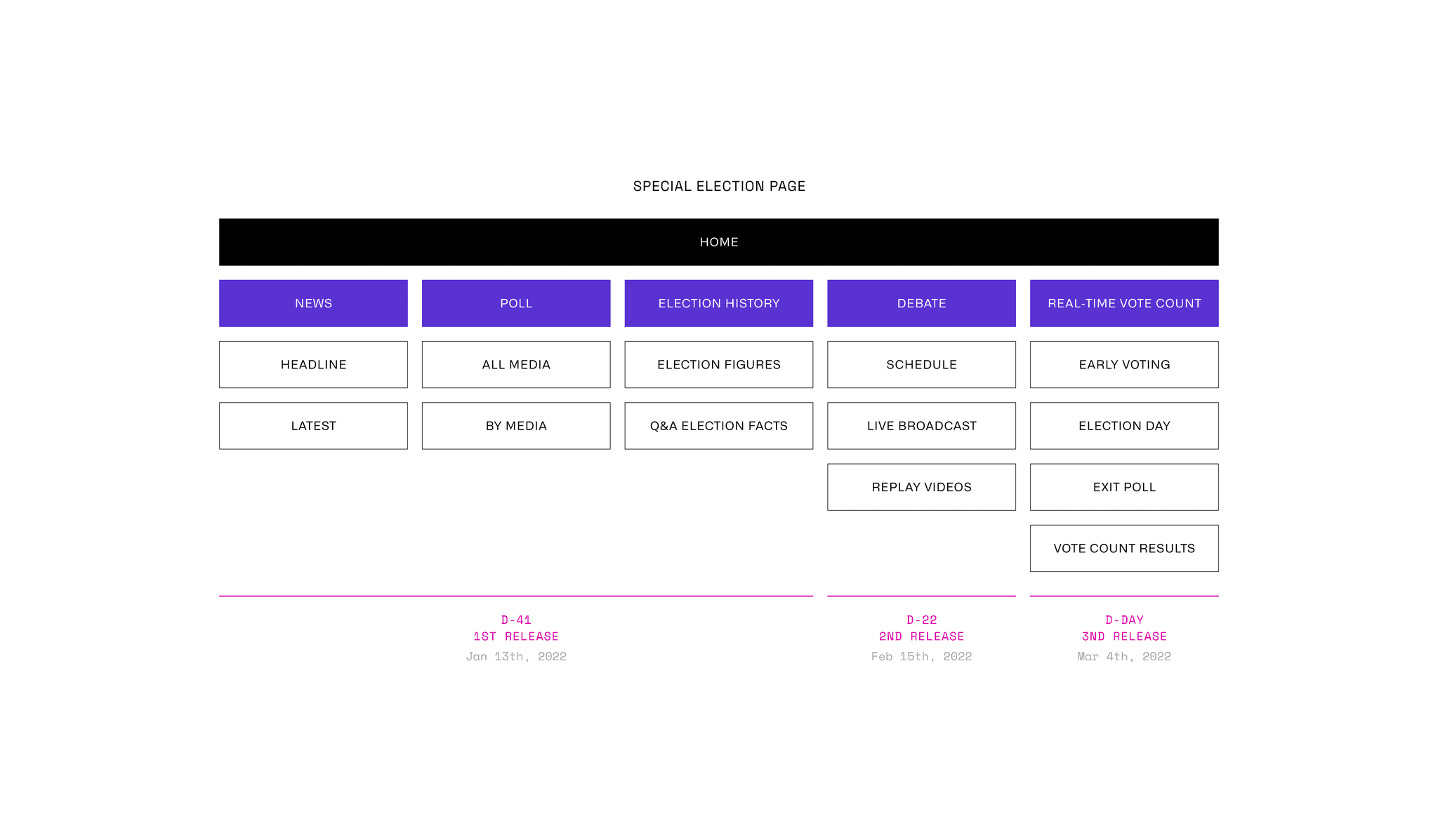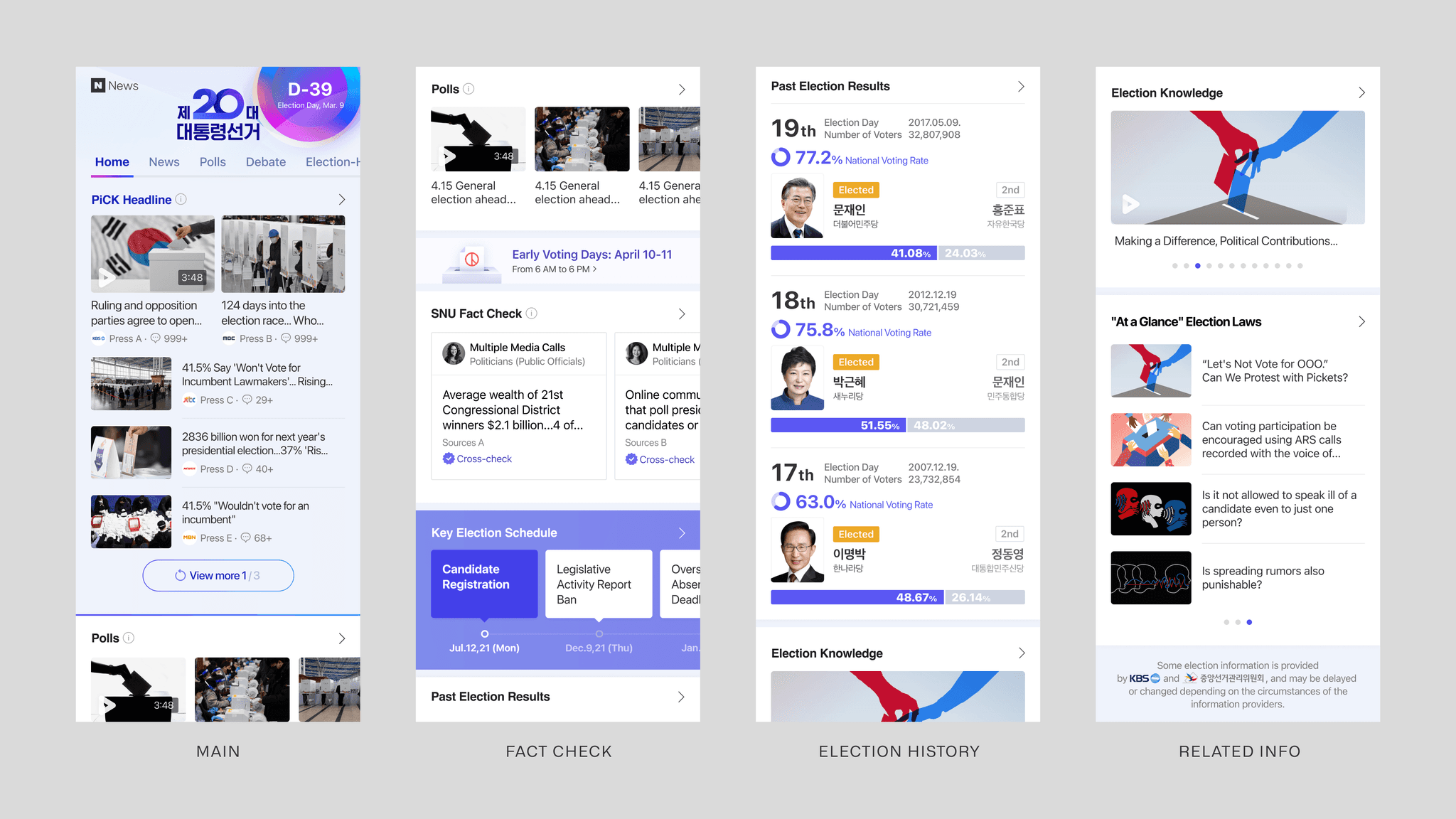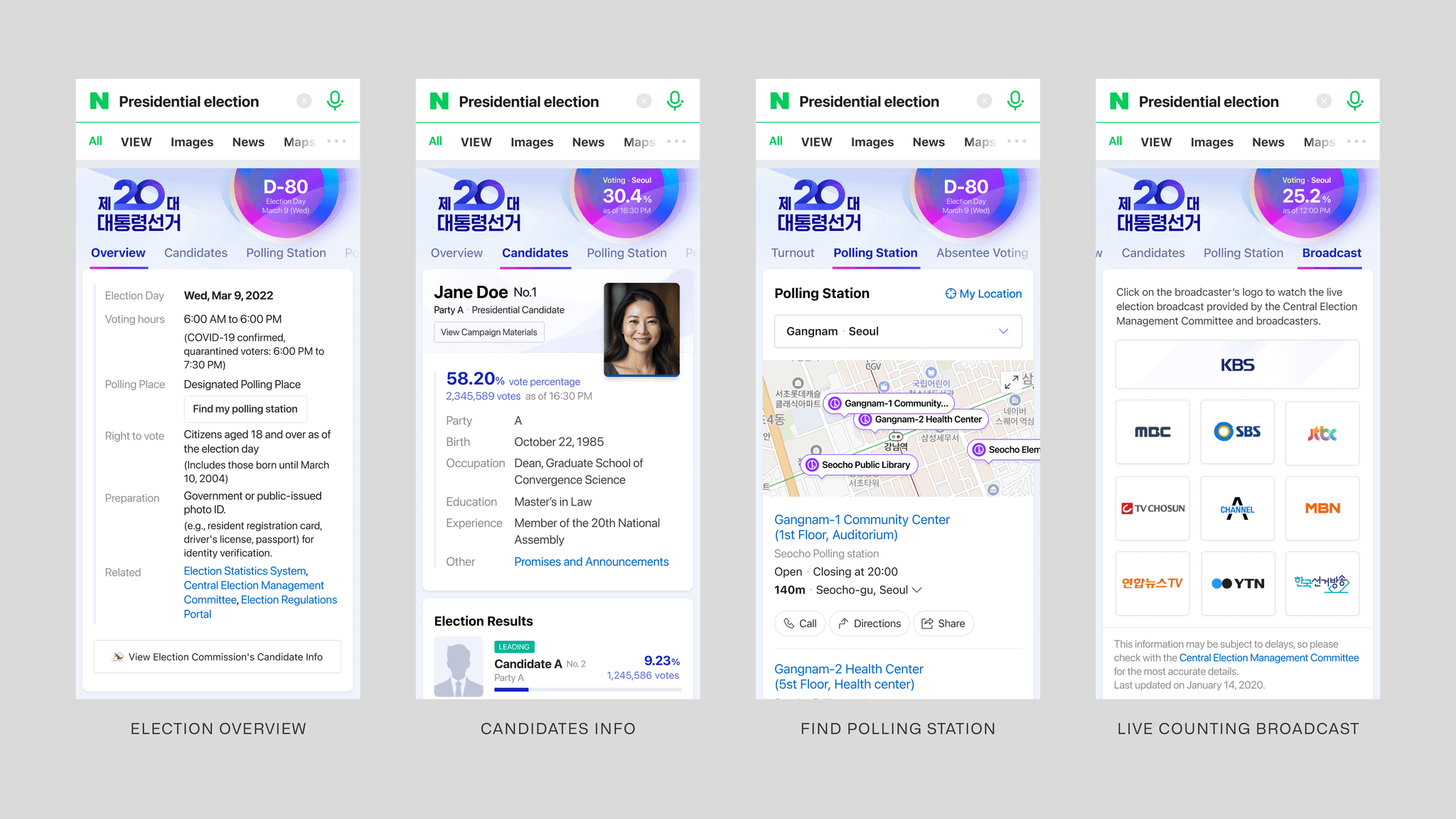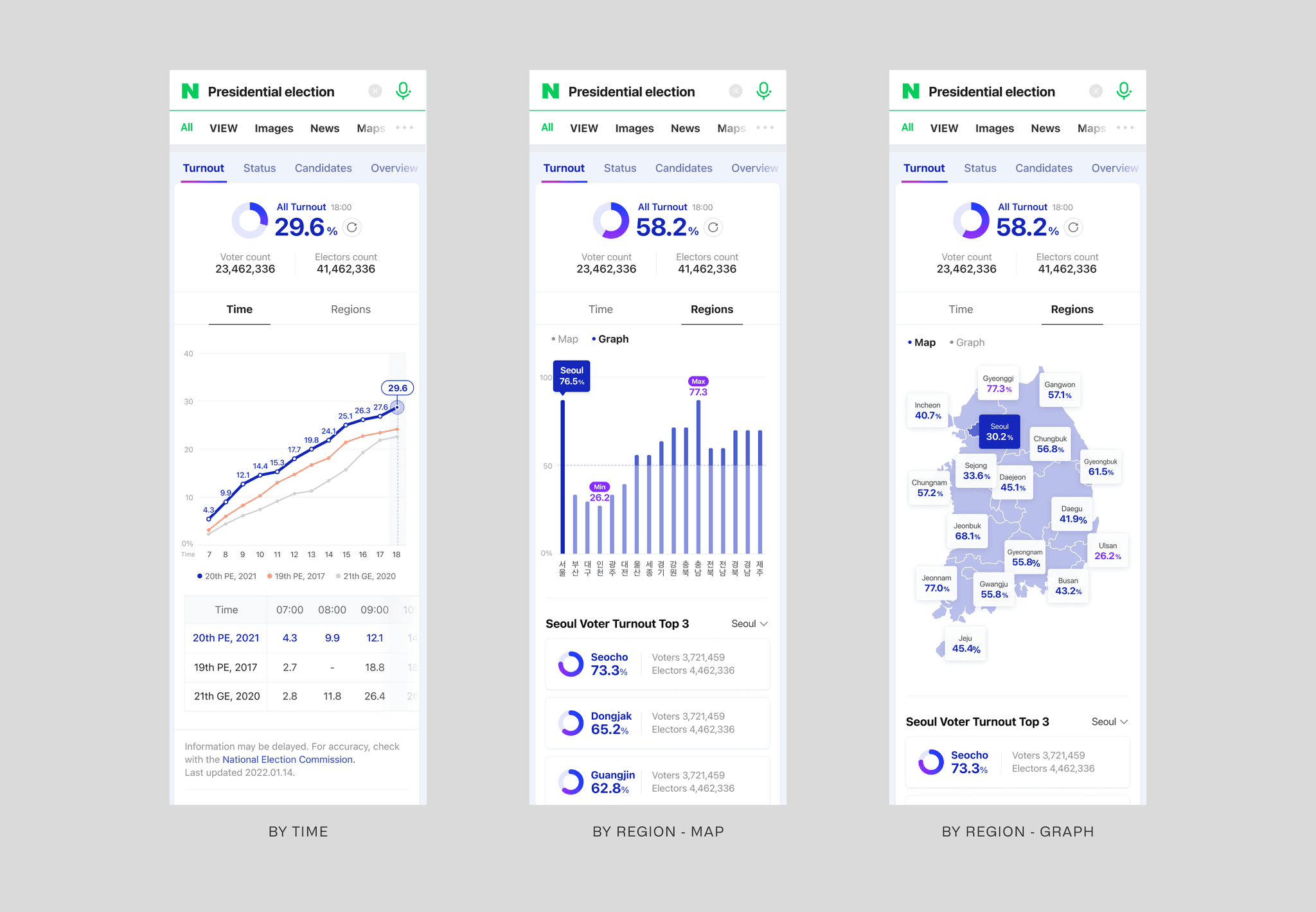Seeing AI:
Enhancing Shopping UX for the Visually Impaired
SVA MFA IxD + Inclusive Design
The product
Seeing AI
My role
Product designer
Responsibilities
UX/UI Design
Project duration
Jan. - May. 2024
The problem
During the pandemic period in 2022, South Korea saw nearly 50,000 new COVID-19 cases daily. Social distancing measures posed significant challenges for voting, particularly for those diagnosed with or in self-quarantine. In this situation, ensuring accessibility and inclusivity for all voters was crucial.
The goal
Our election reporting system provided users with accurate, real-time information and combated misinformation, which promoted fair voter engagement and maintained user safety and trust. We measured the impact by analyzing the main and search page views and search query count.
Do you realize that what seems easy to us during shopping might be a completely different experience for someone else?
User research: summary
Write a short paragraph describing your user research. This can include the type of research you conducted, assumptions that you made going into the research, and how your assumptions changed after conducting research.
Interview
Observed the entire shopping journey—from before, during, to after shopping.
Gained insights into the pain points of the 'Seeing AI' service.
Shadowing
Observed the entire shopping journey—from before, during, to after shopping.
Gained insights into the pain points of the 'Seeing AI' service.
Co-creation
Gained insights beyond our assumptions about potential pain points of whole journey.
Brainstormed ideas together on how to address the challenges.
Understanding the user: Personas
From these personas, I aimed to ensure that the system addresses diverse needs, improves accessibility, and enhances user trust and engagement. I focused on improving the existing system into an inclusive election reporting system by considering users' age and accessibility needs.
The tech-savvy
These individuals have been blind since birth and are skilled at using assistive technologies. They rely on technology to navigate the world and aim to perform tasks more independently and efficiently.
The new navigator
These individuals who have recently lost their sight and are in the process of relearning how to interact with the world without visual cues. They actively seek resources like mobility training, assistive technologies, and support groups to help them adjust.
The tech-savvy
Ming Wu
Writer, inclusion advisor, and mother,
Late 30s, living in New Jersey.
[User name] is a [user characteristics] who needs [user need] because [insight].
Pain points
Hard to browse new, or other items not tried before.
Takes a little time to detect an object using an app.
Needs & Motivation
Need immediate real-time feedback while shopping in physical stores.
Want the opportunity to browse items such as new arrivals or best-sellers.
Require more personalized features or services that feel human and approachable, based on their preferences.
Behaviors
Already familiar with devices or applications and adept at using technology.
Highly organized and have their own hacks to help them identify things at home.
Rely on trusted family members or friends for fashion and shopping advice.
Shadowing sessions: Unveil three phases of the shopping journey
The process begins smoothly with tasks like creating a grocery list, but challenges arise upon entering the store, especially for those with vision impairments, who struggle with locating the entrance, navigating aisles, and finding items. Even checkout poses difficulties.
From these insights, we identified three key opportunities: enabling easy item location with non-visual cues, enhancing product discovery, and saving shopping history for a more personalized experience.
Starting the design
As one of the two lead designers for the special election page, I was responsible for news, polls, debates, and real-time voting status. Our team, based on user research, developed key features to provide voters with essential election-related information. We communicated closely with the election commission and released these features to users in three phases, aligned with the progression of the election.
Hi-fi prototype: Special election page provision
The special election page provided a comprehensive infrastructure with verified election content, including the latest news, poll results, and debate schedules, as well as informative infographics on past elections.
Hi-fi prototype: Real-Time Voting Data Visualization
During the election period, when users searched for a candidate's name, we provided information from the Central Election Management Committee. I led the data visualization efforts to offer concise and accurate real-time updates on voter turnout and ballot counting on the main page. This ensured users had instant access to essential voting information through real-time infographics reflecting the current voting stage.
Enhanced search results
Users could access detailed election information through concise data visualizations on the main page and search results for related presidential election keywords. Before Election Day, we ensured users could gain comprehensive election information. On Election Day, we provided real-time visualizations of voting and counting statuses, with candidate-specific and region-specific data to enhance understanding.
Takeaways
Participating as a designer in a project that provided crucial voting information to South Korean voters during a national event was incredibly valuable. We achieved record-high mobile main page views. During the pandemic, with strict self-quarantine measures in place, the election caused significant confusion. Quickly conveying government guidelines and creating personas to meet distinct generational needs were key to our success.







